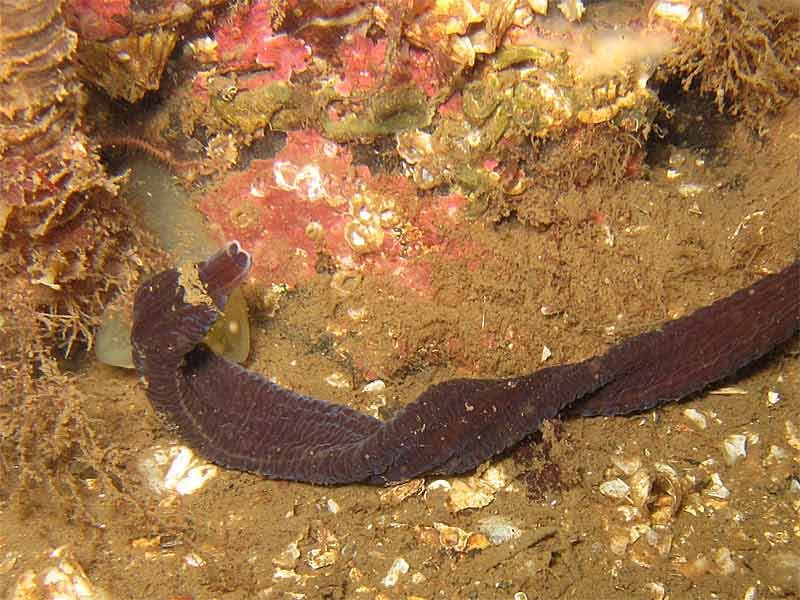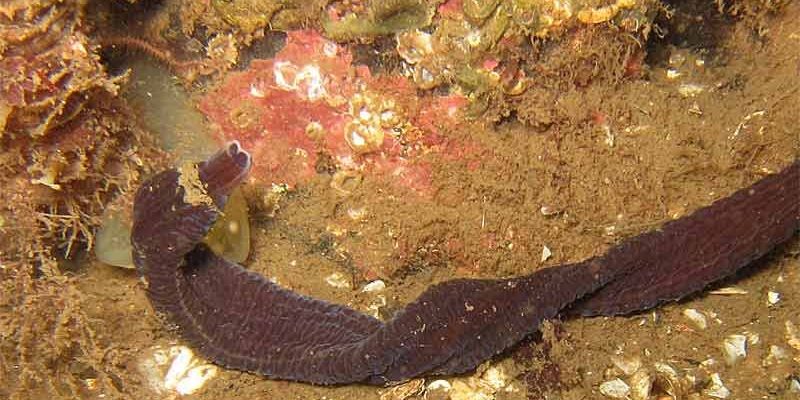
You might be wondering how something that seems so simple can have such an impact. Well, bootlace worms are more than just a wiggly piece of sea life; they’re a vital part of the underwater community, helping to maintain the balance in their habitats. Let’s dive deeper into what makes these worms so special and explore their role in marine ecosystems.
What Are Bootlace Worms?
Bootlace worms, scientifically known as *Lineus longissimus*, are a type of *nemertean worm*. These guys are soft-bodied and relatively stretchy, which is why they can grow to such incredible lengths. In fact, they hold the record for the longest worm species on Earth!
You might find them in various colors, ranging from brown to bright orange. Their body is composed of long strands of muscle, which allows them to move smoothly through sediment and water. Unlike other sea creatures with a clear and distinct shape, bootlace worms can blend in, making them harder to spot for both predators and curious onlookers like us!
These worms usually lurk in the oceans around the British Isles but can be found in various marine environments worldwide. They also have a somewhat mysterious nature—many aspects of their life cycle and behavior are still not fully understood.
Lifecycle and Habitat
Bootlace worms thrive in muddy and sandy bottoms of shallow coastal waters. They’re often found beneath rocks or buried in the sediment, waiting for food to come their way. When it comes to their lifecycle, things get a bit intriguing.
The young bootlace worms start as tiny larvae, floating around in the ocean until they settle down in a suitable habitat. Once they find a good spot, they attach themselves to the substrate, where they grow into adults. They can live for several years, and it’s believed they can regenerate if injured—much like some other sea creatures.
Their habitat is crucial—not just for them but for the ecosystem too. They serve as a habitat for other organisms and create a network of tunnels in the sediment, which aids in aerating the soil and promoting a healthy environment for marine life.
Bootlace Worms as Detritivores
Here’s the thing: bootlace worms play a critical role as *detritivores*. Detritivores are organisms that feed on dead organic matter. By breaking down this material, bootlace worms recycle nutrients back into the ecosystem.
When these worms consume detritus—things like decaying plant material, dead animals, and algae—they help turn it into nutrients that other organisms can use. This process is essential for maintaining the health of marine ecosystems because it ensures that nutrients aren’t locked away and can be utilized by other creatures, such as fish and crustaceans.
Think of bootlace worms as the clean-up crew of the ocean floor. Without them, there would be an accumulation of organic waste, which could lead to unhealthy environments for marine life.
The Food Chain Connection
Bootlace worms are also a key part of the food chain. They serve as a food source for various predators, including fish and larger invertebrates. By being part of the diet of these predators, bootlace worms help support the diversity of species in marine ecosystems.
When bootlace worms flourish, they contribute to a healthier marine environment, creating a balanced food web. This balance is essential because it helps maintain the populations of other marine organisms and keeps the ecosystem functioning smoothly.
Interactions with Other Marine Life
Bootlace worms form intricate relationships with other marine creatures, contributing to biodiversity and ecosystem stability. They often share their habitat with a variety of microorganisms and small invertebrates, which can thrive in the environment created by the worms.
For example, the burrowing action of bootlace worms aerates the sediment, making it a more hospitable place for tiny crabs, shrimp, and mollusks. This interaction helps promote a rich community of life, which is vital for a robust marine ecosystem.
Additionally, bootlace worms can also affect the behaviors of other marine life. Some fishes might prey on them, while others may avoid areas inhabited by these worms, creating a complex interaction network in their habitat.
Environmental Indicators
Speaking of relationships, bootlace worms can potentially serve as indicators of environmental health. Because they are sensitive to changes in water quality and sediment conditions, populations of bootlace worms may fluctuate based on their environment.
If their numbers decline, it could signal issues such as pollution or habitat degradation. Scientists can study these changes to better understand the health of marine ecosystems and take action if needed.
This ability to reflect the state of their environment makes bootlace worms valuable in ecological studies and conservation efforts.
Conservation and Future Research
Despite their importance, bootlace worms face threats from pollution, habitat loss, and climate change. As ocean temperatures rise and seas become more acidic, these factors could harm the delicate balance of marine ecosystems, including the habitats where bootlace worms thrive.
Continued research is crucial to understand how these worms and their ecosystems respond to environmental changes. Conservation efforts can help protect their habitats and, in turn, maintain the complex web of life in marine environments.
Scientists are still uncovering mysteries about bootlace worms, including their genetic makeup and how they interact with other organisms. More research can lead to better conservation strategies and a deeper understanding of marine ecosystems as a whole.
Your Role in Conservation
You might be wondering how you can help. Simple actions like reducing plastic use, participating in beach clean-ups, or supporting organizations focused on marine conservation can make a meaningful difference. Each small action contributes to healthier oceans, which ultimately benefits bootlace worms and countless other marine organisms.
Wrapping Up the Wonders of Bootlace Worms
In conclusion, bootlace worms might look a bit odd, but they’re true heroes in our oceans. They break down organic matter, support biodiversity, and even act as indicators of environmental health. Every time we think about the ocean, let’s remember the importance of these squiggly creatures.
The balance of marine ecosystems depends on various unique organisms, and bootlace worms play a pivotal role. So next time you find yourself near the shoreline or diving into ocean waters, take a moment to appreciate these remarkable worms and their contributions to the underwater world. Let’s work together to protect the habitats that allow them to thrive!

